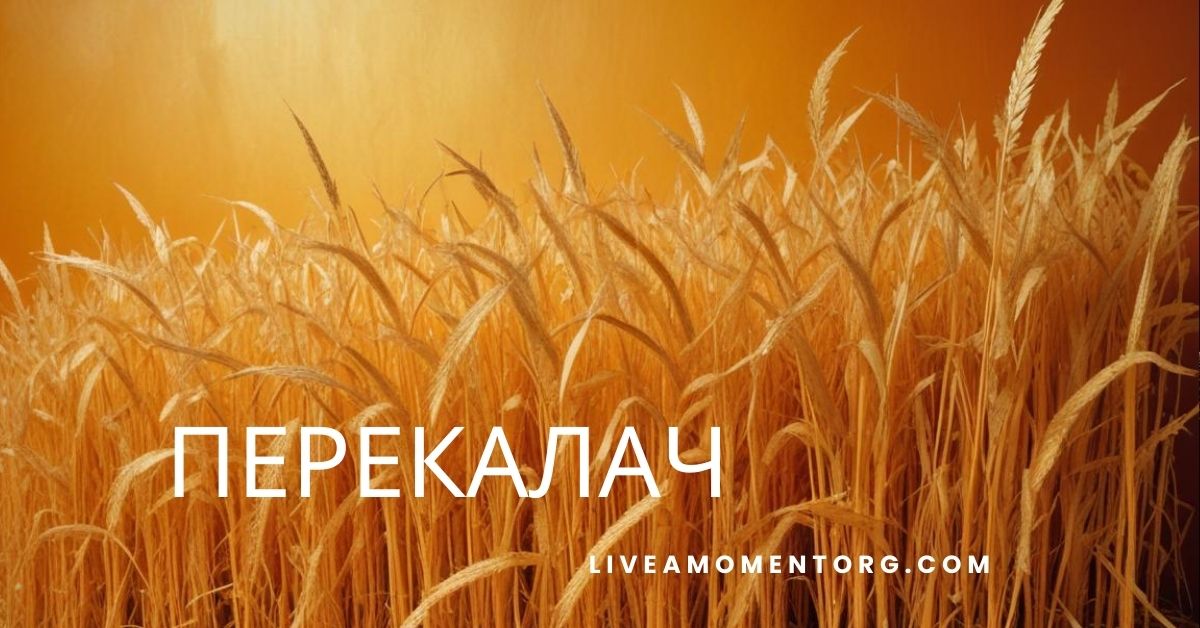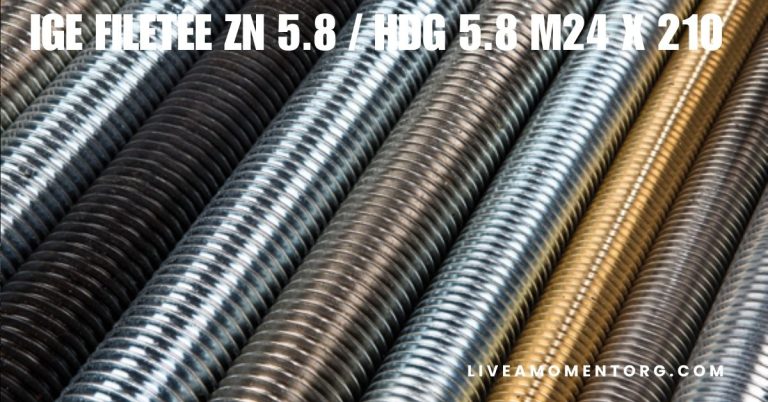Перекалач: The Special Bread of Eastern Europe
Перекалач (pronounced “per-eh-kah-lach”) is a unique and cherished type of bread from Eastern Europe. This special bread holds great cultural importance in many Slavic countries and has been baked for hundreds of years. While not widely known in the United States, перекалач has a rich history and deep meaning for those who grew up with it. In this article, we’ll explore everything you need to know about this traditional Eastern European bread.
What is Перекалач?
Перекалач is a round, braided bread that is often decorated and used for special occasions. It is made from a sweet yeast dough and shaped into an intricate circular braid. The name “перекалач” comes from the Ukrainian words for “over” (пере) and “wheel” (коло), referring to its round, wheel-like shape.
This festive bread is most commonly associated with Ukraine, but similar breads are found throughout Eastern Europe under different names. In some regions, it may be called kalach, kolach, or kołacz. While the exact origins are unclear, перекалач has been an important part of Slavic culture for centuries.
Key Features of Перекалач:
- Round, braided shape
- Made with sweet yeast dough
- Often decorated with designs or symbols
- Used for holidays and special events
- Has deep cultural and spiritual meaning
The History and Cultural Significance of Перекалач
Перекалач has a long history in Eastern European culture, dating back hundreds of years. In pre-Christian Slavic traditions, round breads were seen as symbols of the sun. The circular shape represented the cyclical nature of seasons and life.
When Christianity spread to Eastern Europe, перекалач took on new religious meanings while keeping its cultural importance. The bread’s round shape came to represent eternity and God’s infinite love. Its braided design symbolized the Holy Trinity.
Over time, перекалач became closely tied to major holidays, family celebrations, and important life events in Slavic countries. Some key occasions when перекалач is traditionally made include:
- Christmas and Easter
- Weddings
- Harvest festivals
- Welcoming honored guests
- Funeral ceremonies
In Ukraine and other parts of Eastern Europe, перекалач is more than just bread – it’s a powerful cultural symbol. The act of making and sharing перекалач brings families and communities together. Many people have cherished childhood memories of helping grandmothers bake this special bread for holidays.
Even as Eastern European countries modernized, перекалач kept its place as an important tradition. Today, it remains a beloved part of cultural heritage for many Slavic people, both in Europe and immigrant communities around the world.
How Перекалач is Made
Making перекалач is a multi-step process that requires time, skill, and patience. While recipes can vary, here are the basic steps for making traditional перекалач:
- Make the Dough: A sweet yeast dough is prepared using flour, eggs, milk, sugar, and other ingredients. The dough needs to rise for several hours.
- Divide and Braid: The risen dough is divided into several long strands. These strands are then carefully braided into a circular shape.
- Second Rise: The braided bread is left to rise again until it doubles in size.
- Decorate: Before baking, the top of the перекалач is often brushed with egg wash and decorated. Common decorations include braided designs, flowers, or crosses made from extra dough.
- Bake: The bread is baked until golden brown, usually taking about 30-45 minutes.
- Cool and Serve: After cooling, the перекалач is ready to be shared and enjoyed.
The exact process can change based on family traditions or regional styles. Some bakers add special ingredients like raisins, nuts, or spices to their перекалач. The size can also vary greatly – from small, single-serving breads to massive loaves for big celebrations.
Making перекалач is often a group activity, with family members working together. Many people say the love and togetherness that goes into making перекалач is just as important as the ingredients.
Regional Variations of Перекалач
While перекалач is most closely associated with Ukraine, similar festive breads exist across Eastern Europe. These variations share many features but may have unique local traditions:
- Poland: Called “kołacz”, this bread is often served at weddings. Polish versions sometimes have sweet cheese fillings.
- Czech Republic and Slovakia: Known as “koláč”, it’s often topped with fruit, poppy seeds, or sweet cheese.
- Russia: The Russian “kalach” is usually not braided, but shaped into a ring with a handle.
- Hungary: The “kalács” is a braided bread that may be round or long. It’s popular at Easter.
- Romania: Called “colac”, this bread is important for Christmas and funeral traditions.
- Bulgaria: The “kravai” is similar to перекалач and used for many celebrations.
Each country and region has put its own spin on this traditional bread over time. However, the core idea of a special, braided bread for important occasions remains the same across cultures.
Перекалач in Modern Times
Today, перекалач continues to be an important part of cultural traditions for many people of Eastern European descent. However, its role has evolved in some ways:
- Preserving Heritage: For immigrant communities, making перекалач is a way to stay connected to their cultural roots.
- Artisanal Baking: Some bakeries specialize in traditional breads like перекалач, appealing to both cultural nostalgia and foodie interests.
- Simplified Versions: Busy modern families might use quicker recipes or buy перекалач from stores for holidays.
- Fusion Cuisine: Creative chefs have started incorporating перекалач into fusion dishes or giving it modern twists.
- Cultural Education: Schools and community groups sometimes teach перекалач-making as a way to share cultural knowledge.
While it may not be an everyday food for most people now, перекалач remains a powerful symbol of heritage and togetherness for many.
Nutritional Value of Перекалач
Перекалач is a type of enriched bread, which means it contains ingredients like eggs and milk that add nutritional value. However, it’s also usually high in sugar and calories. Here’s a general idea of what you might find in a serving of перекалач:
- Calories: A slice of перекалач can have anywhere from 200-300 calories, depending on the recipe.
- Carbohydrates: As a bread product, it’s high in carbs – often 30-40 grams per serving.
- Protein: The eggs and milk add some protein, usually around 5-7 grams per slice.
- Fat: Перекалач isn’t typically very high in fat, but may have 5-10 grams per serving.
- Vitamins and Minerals: It provides some B vitamins, calcium, and iron, thanks to the enriched flour and dairy ingredients.
It’s important to remember that перекалач is traditionally a special occasion food, not an everyday bread. Like many holiday treats, it’s meant to be enjoyed in moderation as part of cultural celebrations.
How to Enjoy Перекалач
If you have the chance to try перекалач, here are some traditional ways to enjoy it:
- Plain: Перекалач is delicious on its own, especially when fresh from the oven.
- With Butter: A classic way to eat перекалач is simply spread with good butter.
- As Part of a Meal: During holidays, перекалач often has a special place on the dinner table.
- With Tea or Coffee: It makes a perfect sweet accompaniment to hot drinks.
- In Ritual Use: In some traditions, перекалач is blessed or broken in specific ways before eating.
Remember, перекалач is more than just food – it’s a cultural experience. If you’re trying it for the first time, take a moment to appreciate the history and tradition behind this special bread.
Making Перекалач at Home
If you’re interested in making перекалач yourself, here’s a basic recipe to get you started. Remember, practice makes perfect when it comes to the braiding!
Ingredients:
- 4 cups all-purpose flour
- 1/4 cup sugar
- 1 packet active dry yeast
- 1 teaspoon salt
- 1 cup warm milk
- 2 eggs, beaten
- 1/4 cup butter, melted
- 1 egg (for egg wash)
Instructions:
- Mix flour, sugar, yeast, and salt in a large bowl.
- Add warm milk, beaten eggs, and melted butter. Mix until a soft dough forms.
- Knead the dough for about 10 minutes until smooth.
- Let the dough rise in a warm place for about 1 hour.
- Divide the dough into 3 equal parts and roll each into a long rope.
- Braid the three ropes and form into a circle, pinching the ends together.
- Let the braided dough rise for another 30 minutes.
- Brush with beaten egg and bake at 350°F (175°C) for about 30-35 minutes until golden brown.
This is a simplified version – traditional recipes may be more complex. Don’t be discouraged if your first attempt isn’t perfect. Making перекалач takes practice and patience.
Перекалач Around the World
While перекалач is most common in Eastern Europe, similar breads can be found in other parts of the world:
- Jewish Challah: This braided bread shares many similarities with перекалач and may have influenced its development.
- Greek Tsoureki: Another braided, sweet bread used for Easter celebrations.
- Mexican Rosca de Reyes: A ring-shaped bread for the Epiphany that resembles перекалач.
- Finnish Pulla: A braided sweet bread that’s part of everyday life in Finland.
These connections show how bread-making traditions have spread and evolved across cultures throughout history.
Preserving the Tradition of Перекалач
As the world becomes more globalized, some worry about losing traditional foods like перекалач. Here are some ways people are working to keep this cultural heritage alive:
- Family Traditions: Many families make a point of teaching younger generations how to make перекалач.
- Cultural Festivals: Events celebrating Slavic heritage often feature перекалач-making demonstrations.
- Cookbooks and Online Resources: There are now many recipes and guides available to help people learn about перекалач.
- Food Tourism: Some travel programs in Eastern Europe include перекалач-making as a cultural experience.
- Social Media: People share photos and recipes of перекалач online, spreading awareness of this tradition.
By continuing to make and share перекалач, people keep an important piece of cultural history alive for future generations.
Frequently Asked Questions About Перекалач
What does перекалач taste like?
Перекалач has a slightly sweet, rich flavor similar to brioche or challah bread. It’s soft and fluffy on the inside with a golden, sometimes crispy exterior.
Is перекалач only for special occasions?
Traditionally, yes. Перекалач is most often made for holidays, weddings, and other important events. However, some people enjoy making it more regularly as a treat.
Can перекалач be frozen?
Yes, перекалач can be frozen for up to 3 months. Wrap it tightly in plastic wrap and aluminum foil before freezing. Thaw at room temperature before serving.
Are there gluten-free versions of перекалач?
While not traditional, some bakers have created gluten-free recipes for перекалач using alternative flours. These may not have the same texture as the original but can be a good option for those with gluten sensitivities.
How long does перекалач stay fresh?
Homemade перекалач is best eaten within 2-3 days. Store it in a bread box or paper bag at room temperature. It can be refreshed by warming in the oven for a few minutes.
What’s the difference between перекалач and other braided breads?
While similar to breads like challah, перекалач is distinct in its round shape and cultural significance in Eastern Europe. Its specific ingredients and use in traditions also set it apart.
Can перекалач be made with whole wheat flour?
While not traditional, some modern recipes use part or all whole wheat flour for a healthier version. This will change the texture and flavor somewhat.
Is перекалач always sweet?
Most перекалач recipes are slightly sweet, but the level of sweetness can vary. Some versions for specific holidays or regions might be more or less sweet.
How big is a typical перекалач?
The size can vary greatly depending on the occasion. Small, individual-sized перекалач might be 6-8 inches in diameter, while large celebration loaves could be 12-16 inches or even bigger.
Are there savory versions of перекалач?
While less common, some regions do have savory versions of перекалач or similar breads. These might include herbs, cheese, or even meat fillings.
Conclusion
Перекалач is much more than just a type of bread. It’s a symbol of cultural heritage, a centerpiece for celebrations, and a link between generations. From its ancient origins to its place in modern kitchens, перекалач continues to bring people together and keep traditions alive.
Whether you’re of Eastern European descent or simply interested in world cuisines, перекалач offers a taste of history and culture. Its intricate braids and golden crust represent the care and love that go into preserving family recipes and cultural practices.
As our world becomes more connected, foods like перекалач serve as important reminders of our diverse cultural backgrounds. By learning about and appreciating traditions from around the world, we enrich our own lives and build bridges between communities.
So the next time you see a beautiful braided loaf of bread, remember the story of перекалач. Better yet, try making one yourself or seek out a traditional bakery that offers this special bread. You’ll be participating in a tradition that has brought joy and meaning to people for centuries.
In the end, перекалач is more than just food – it’s a edible piece of cultural art, a symbol of community, and a delicious way to connect with history. Whether you’re celebrating a special occasion or simply curious about world breads, перекалач offers a unique and meaningful experience that’s well worth discovering.







